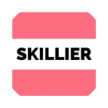
The world of product management is constantly evolving. In order to stay ahead of the curve, you need to be aware of the latest trends and skills that are necessary for success. In this blog post, we will discuss the top-8 skills that will be essential for a Product Owner or Manager in 2022. Keep reading to learn more!
The Top 8 skills required to become a product owner/product Manager in 2022 are:
- The ability to manage multiple products simultaneously.
- Project management experience
- The ability to work with stakeholders to align objectives
- The ability to create and execute go-to-market plans
- Experience with product lifecycle management
- An understanding of customer needs and how to address them
- Strong analytical skills
- Excellent communication skills
The distinction between a Product Manager and a Product Owner is unclear in most organizations. Is the Product Manager the Product Owner’s point of contact? Does the Product Manager directly report to the Product Owner? With so much debate in the business, we’ll clarify the distinction between product owner and product manager so you know where you stand.
To understand better we need to explore the roles of each separately.
The Role of the Product Manager (PM) – The product manager focuses on the client’s and company’s benefits. Before a feature can be taken up by other agile teams, the PMs must prioritise it and ensure that it provides obvious benefits to the customer and/or the organisation. The PM is also the point of contact for company owners and other stakeholders who want ART members to conduct work for them. Product managers are strategists with a tactical mindset. They are in charge of the product’s vision, the company’s goals, and market performance. Product owners are focused on the requirements of their agile teams. They’re there to make sure their own teams possess what they need to break down the functionality they’re continuing to work on into stories.
The Product Owner’s role-The PO is accessible to the team, and if the PO has been unable to respond to a question, they will seek an appropriate, timely solution. Product owners are much more proactive in nature (and are frequent in agile companies). The PO also considers the manager’s tactics. They have the ability to put them into tangible duties. The agile teams and the owners can collaborate cross-functionally. The delivery of a product is generally a product owner’s first priority. They work with a key professional, such as a Product Manager or Business Account Owner, to deliver goods. While Product Managers oversee a wider range of product responsibilities, they must strike a balance between value added and delivery of the product.
Product management is increasingly regarded as a critical component of every organisation, as seen by the shift in roles. It is regarded as a competitor by all other corporate functions, despite not being a member of advertising or engineering. In today’s environment, becoming a Product Manager is a fascinating experience. In the Agile release train , the Product Owner is considered a servant leader. The Product Manager, on the other hand, is more of a coach. What’s important to remember is that in order for agile product delivery to be successful, there must be a close relationship between these two roles.
All of the user’s needs will be overseen by a project manager. They also make certain that the clients are in charge of deciding what to build next. To increase production and outcomes, they’ll organise the crew around a product roadmap.
The person in charge of a project is known as the project owner. He’d do everything he could to make the item as valuable as possible. It’s done by keeping track of the backlog of products. All of the customers’ voices are heard thanks to the product owner’s support.
The fundamental purpose of the project manager is to prioritise and know what to build next. They’d find out what the user wants and do research to provide it. All long-term goals and strategies are also developed by the product manager. They are in charge of team alignment as well as feature delivery. Overall, the project manager is in charge of the product manufacturing process’s future responsibilities and obligations. They are long-term and strategic thinkers.
The value of the product will be maximised by the owner. The development team’s efforts will be scrutinised in order to boost the product’s value. The backlog and grooming are the primary concerns of the product owner. Customer concerns, product development team management, scrum and agile meetings, and feedback are all things that need to be addressed.
Conclusion paragraph:
So, what will it take to be a successful Product Owner or Manager in 2022? Based on the skills required by most organizations, we would say that experience with project management, stakeholder alignment, customer needs assessment, and product lifecycle management are essential. As technology changes and businesses become more complex, the role of the Product Owner/Product Manager is only going to become more important. Are you ready for the challenge? Let Skillier help you upskill and enhance your journey!
About the Creator
Skillier
Our world class certification courses will get you recognized and fuel your growth. Your purchase will help transform a life by supporting girls & education.






Comments
There are no comments for this story
Be the first to respond and start the conversation.